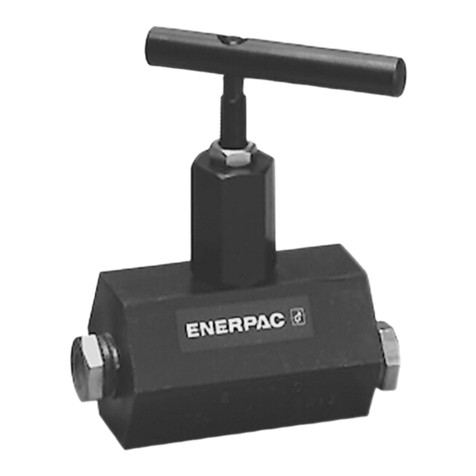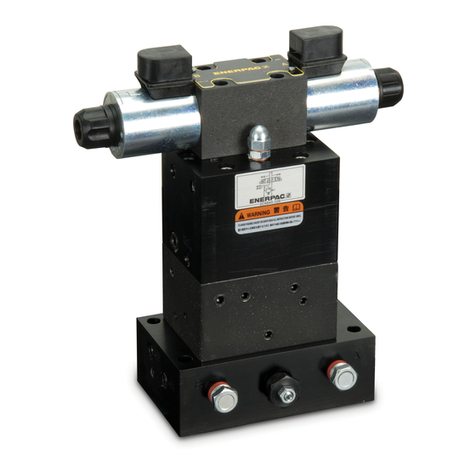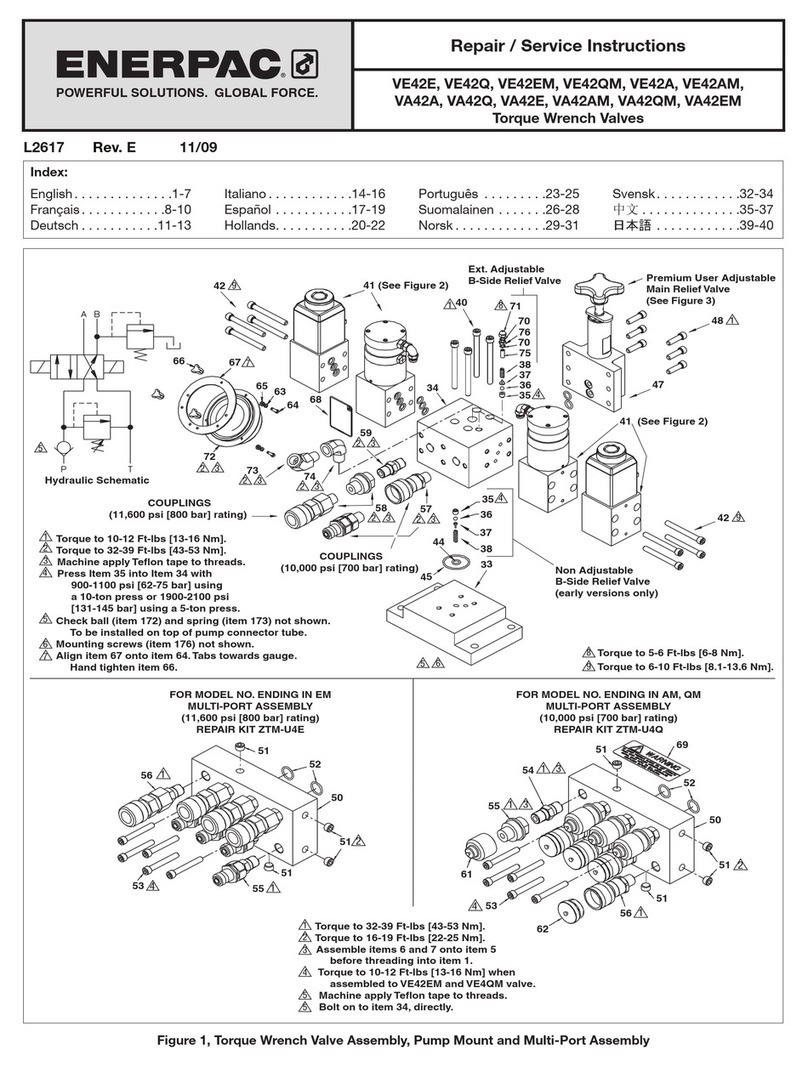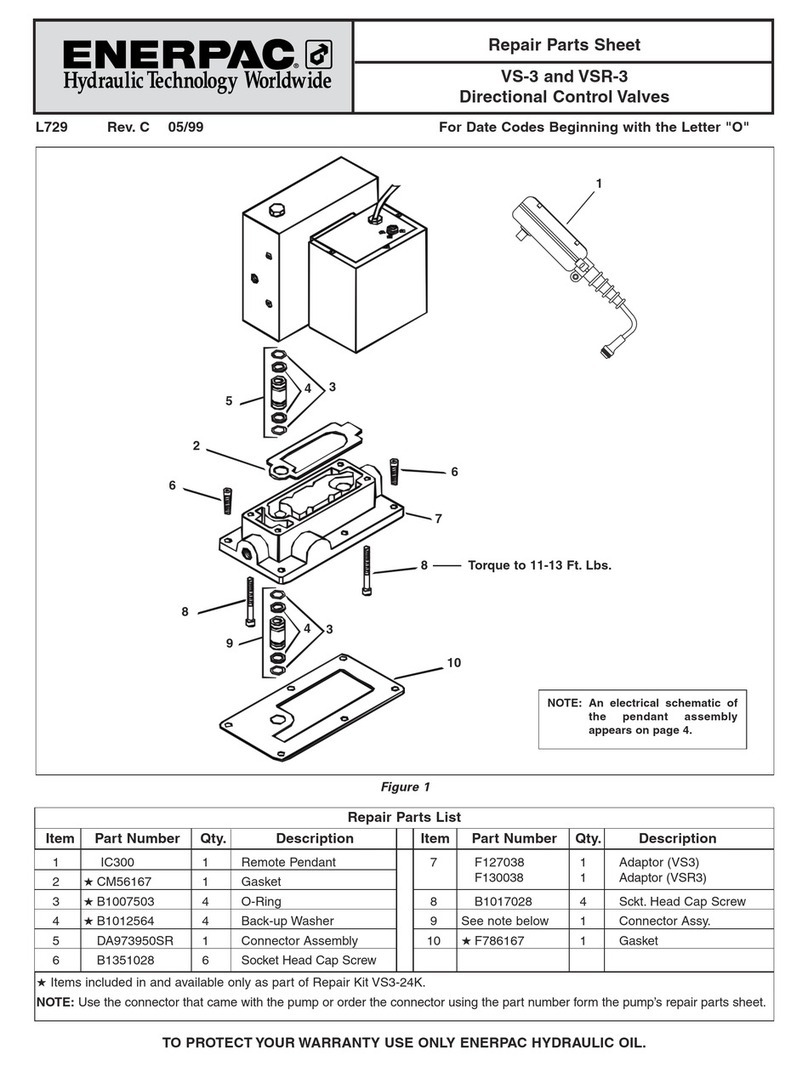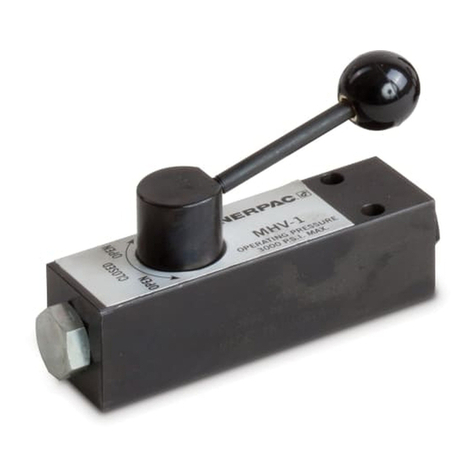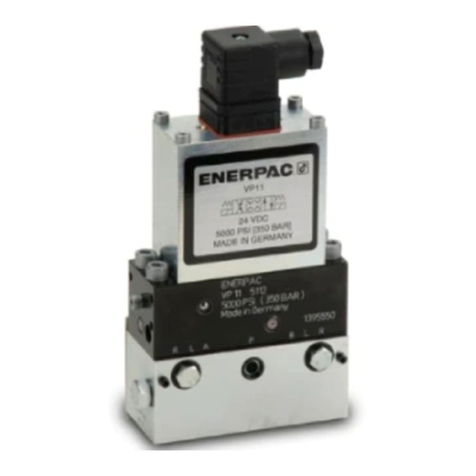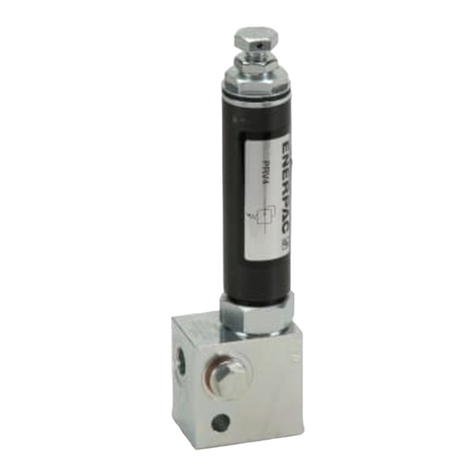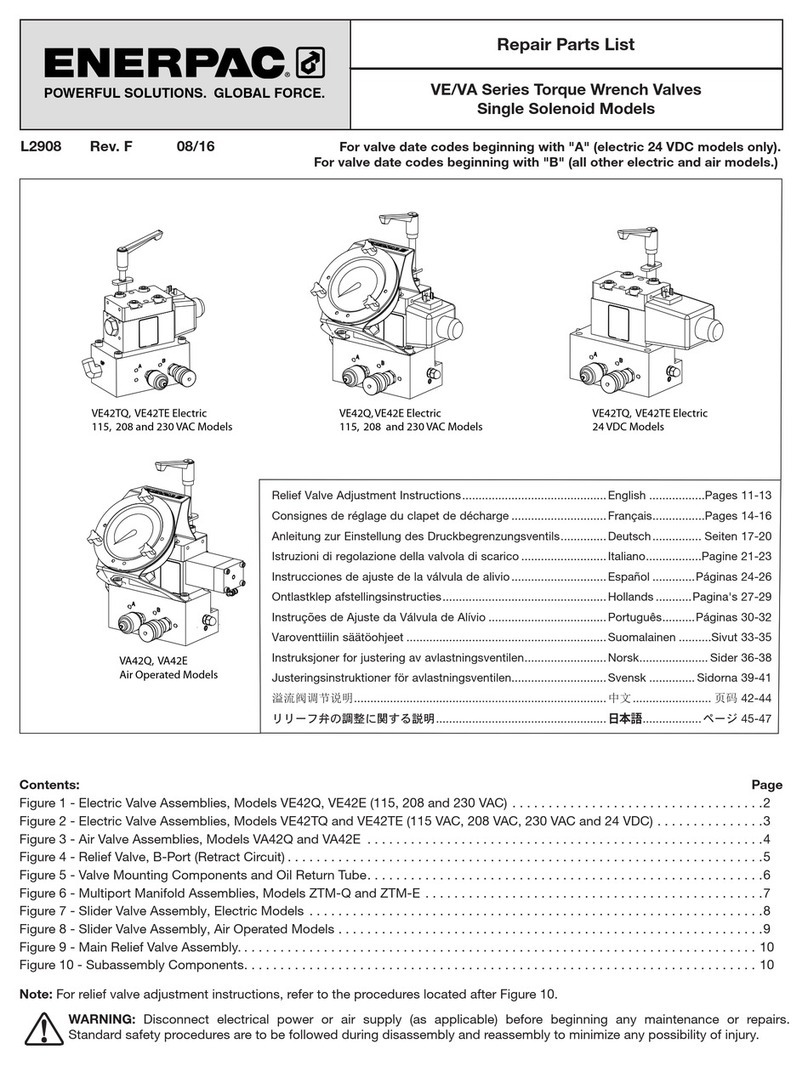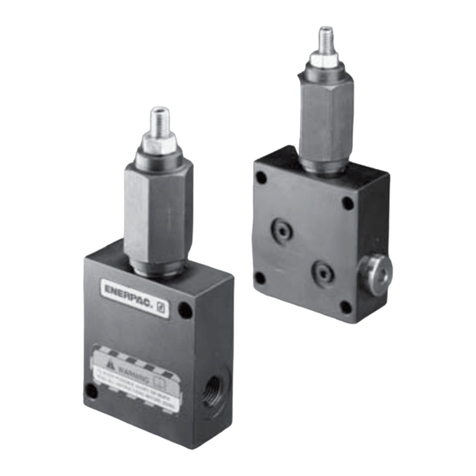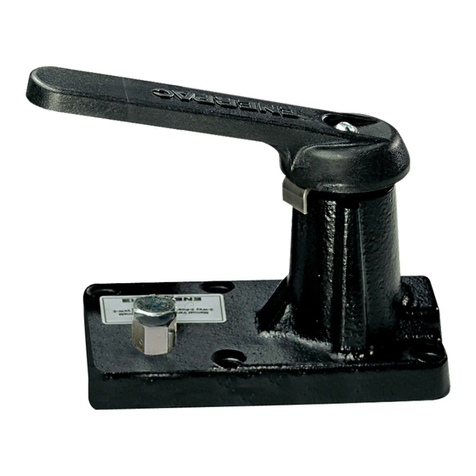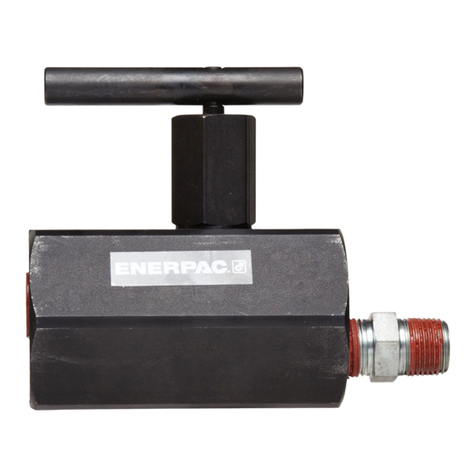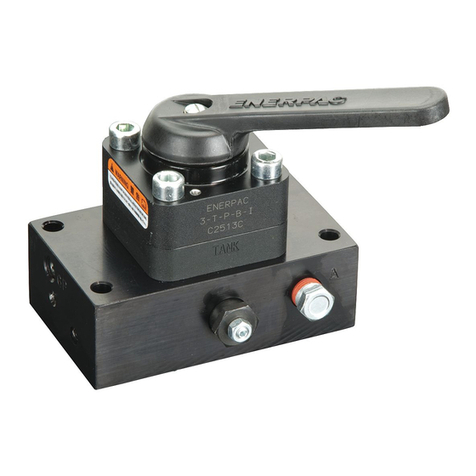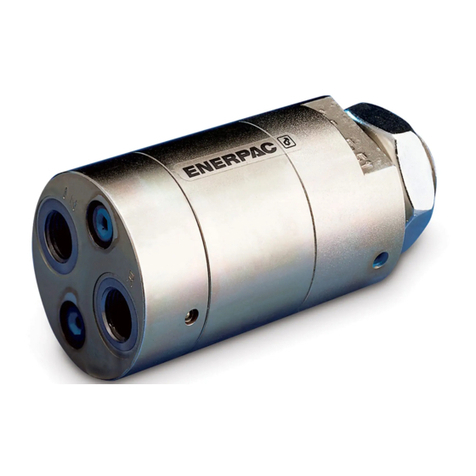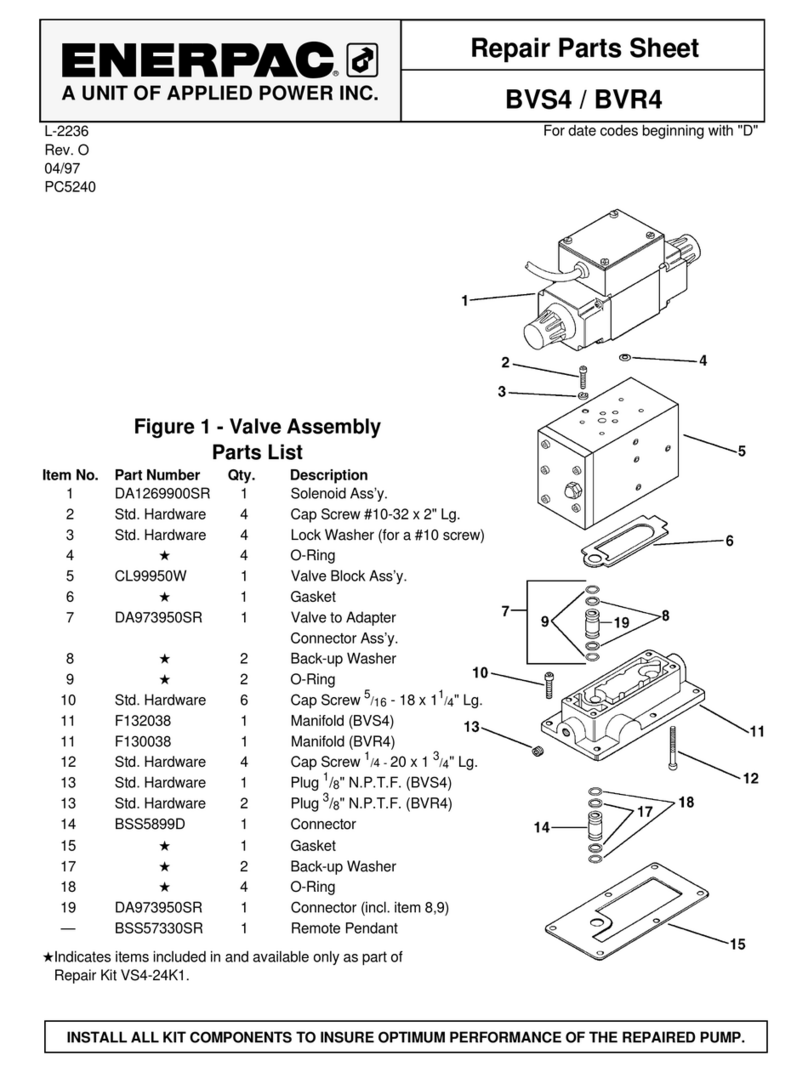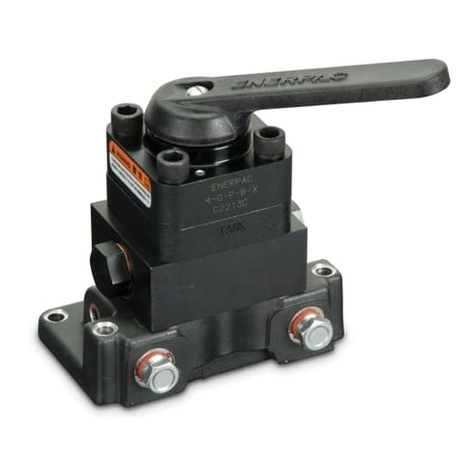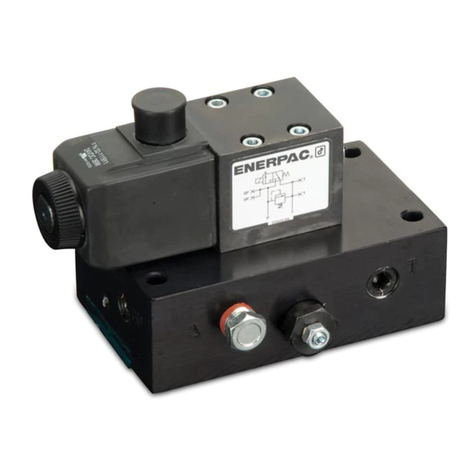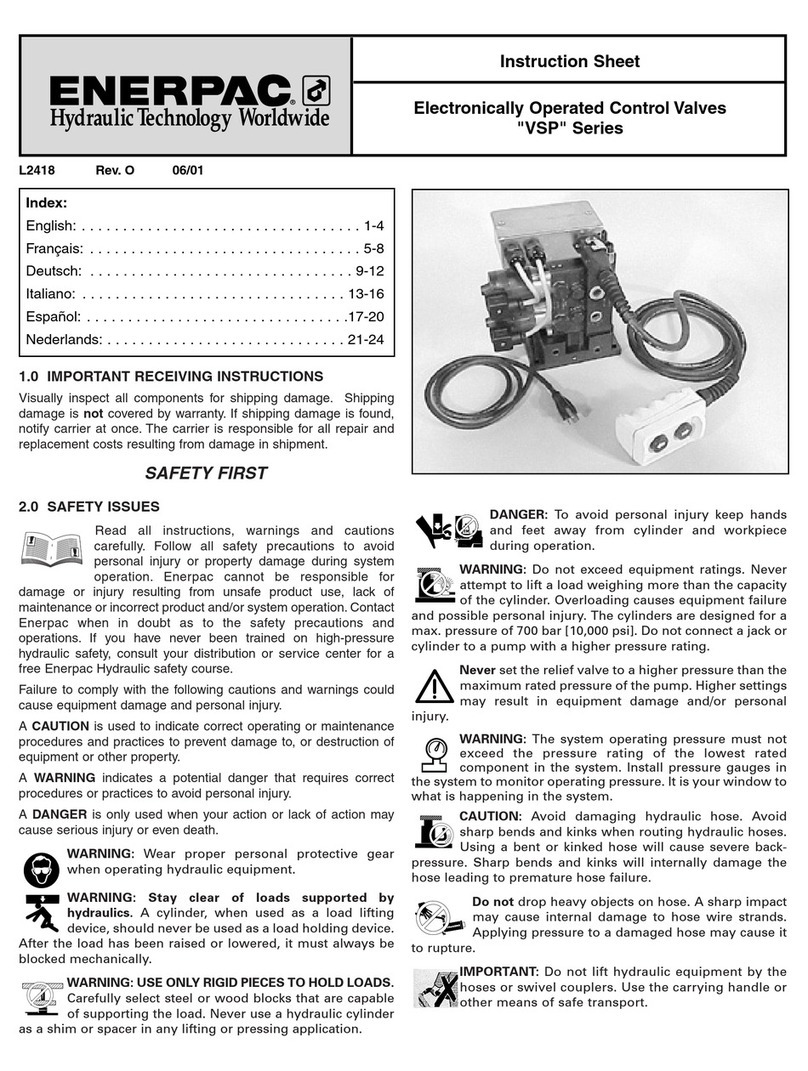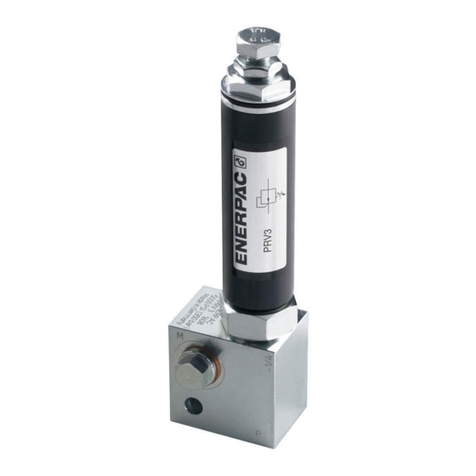2
Remove Motor (If necessary)
1. Remove the two nuts and washers (items 15, 14) from the
underside of the pump manifold and remove motor (item 102).
NOTE: Motor is secured with RTV sealant and must be pried
from manifold to remove.
Disassemble Pump Shaft
1. Remove retaining ring (item 144), and bearings (items 117
and 118) from shaft, if required.
2. Remove roll pin (item 115) from gear and shaft (items 144,
119), by using a 5/32" roll pin punch.
3. Remove shaft (item13) from pump manifold.
4. Remove gear (item 114) and disc bearings; two white (item
145), and one black bearing (item 116).
ASSEMBLY
Refer to Repair Parts Sheet L2071 and use repair kit PUJ-
1200BK1.
IMPORTANT: Use suitable solvent to clean all parts prior to
assembly. Clean RTV sealant from motor end cap, top and bottom
of pump manifold and reservoir assembly. Rebuild using
replacement items from repair kit.
Assemble Pump Shaft
1. Assemble gear (item 114) and disc bearings into pump
manifold. Install one white bearing (item 145 from new kit)
above the gear, the black bearing (item 115) directly below
gear and the other new white bearing at the bottom.
2. Install shaft (item 119) through lower manifold bearing, gear
and washers, and into upper manifold bearing.
3. Install new roll pin (item 115) from kit through hole in gear
and shaft (items 114 and 119). With these holes aligned, use
a 5/32" roll pin punch and tap the roll pin onto place.
4. Assemble bearings (items 117 and 118) to shaft. Using
retaining ring pliers, place retaining ring (item 144) onto shaft.
Install Motor
NOTE: Before installation, apply a thin continuous bead of RTV
sealant to motor end cap at three locations: around the tie rods
and at the center boss.
1. Position the motor onto manifold with wire leads at top of
motor facing to the left with hydraulic output port facing you.
2. Secure the motor to the manifold by placing the two lock
washers (item 14) and nuts (item 15) on the motor tie rods
under the manifold. Torque nuts to 34-38 in-lbs.
Assemble Piston Block
IMPORTANT: During installation of piston blocks, hold manifold
firmly when tightening cap screws. This will help prevent plunger
spring from cocking block and causing damage to the outlets.
1. Assemble high-pressure piston block (item 107, small .24
diameter piston).
a. Place new white o-ring (item 108) from kit between block
and manifold.
b. Anchor piston block by compressing piston spring against
eccentric bearing and hold firmly in place. Use care to
prevent block from cocking. Tighten the two 3/16" socket
screws (item 109). Torque to 14-16 ft-lbs.
2. Assembly high-flow piston block (item 105, large .53
diameter piston).
a. Place new black o-ring from kit between block and
manifold.
b. Anchor piston block by compressing piston spring against
eccentric bearing and hold firmly in place. Use care to
prevent block from cocking. Tighten the two 3/16" socket
screws (item 109). Torque to 14-16 ft-lbs.
Pump Re-Assembly
1. Install safety relief valve (item 121) to manifold to manifold.
2. Install check for high flow piston block by replacing the 1/4"
ball, spring, and plug (items 146, 147, 148) with new ones
from kit.
Coin seat if required by using a 1/4" coining tool.
3. Install unloading valve assembly (item 150) into high flow
piston block (item 105).
NOTE: Unloading valve comes preset from factory and is not
adjustable. If valve is defective, replace.
Postition and tighten elbow (item 142) and unloading tube
(item 143) to point at the gear mesh (item 114) so gear will
be lubricated.
4. Install new gasket (item 156) on reservoir (item 3). Align
holes on pump manifold with holes on reservoir.
NOTE: Apply sealant to the top of the reservoir before
installing the cork gasket. Do not use any sealant on the
nitrile gasket.
5. Install the 8 slot head screws (items 5) and washers (items
4) that hold the pump cover plate onto the reservoir. Torque
to 47-53 in-lbs. (5.3-6.0 Nm).
2-Way Valve Installation
1. To Install 2-way valve, use the stem, handle, and screw
(items 133, 138, 139) that came with pump and replace the
ball, o-ring, and washer (items 132, 134, 135) with new parts
from the repair kit.
2. Replace adjustable relief assembly and install new gasket,
ball, and gasket (items 193, 123, 106, 192, 124, 195, 125,
126, 128, 129, 130, 131) from kit. Do not adjust screw until
testing procedure.
Wiring Connections
Refer to wiring diagram in repair parts sheet.
1 Install the foam baffle (item 19) on motor. Center baffle
between upper and lower air vent holes in motor.
2. Attach power cord (item 9) and pendant cord to pump
manifold by using the anchor strap and screws.
3. PUJ, 4001 only: Connect black motor wire (item 43) flag to
relay (item 39) and then to power switch (item 20).
4. PUJ, 4001 only: Connect transformer lead wire (item 45) to
white power cord wire and black motor wire by plugging in
connector.
5. PUJ, 4001 only: Connect white pendant wire to relay (item
39).
6. PUJ, 4001 only: Connect black pendant wire to transformer
(item 38) at transformer connection #8.
7. PUM only: Connect black motor wire (item 22) to power
switch (item 20).
8. Connect black power switch jump wire to thermostat (item 6).
9. Connect black power cord wire to thermostat (item 6).
Shroud Assembly
1. Carefully lower shroud over motor and baffle. Use care to not
disturb wiring and to not damage foam baffle.
NOTE: Make sure baffle is between air vents on motor and
NOT blocking vent slots in shroud.
2. Align holes in shroud with holes in pump manifold.
